Under Coconut SkiesFeasts & Stories from the Philippines
A book of feasts filled with vibrant and kaleidoscopic Filipino flavours.
An archipelago of incredible breadth, the Philippines boasts 7,107 islands, separated and yet bound together by water. The true count is said poetically to change with the tide, when islets disappear before re-emerging. These many shores contain different stories, but wherever you go in the Philippines, the flavors reflect the tropical landscape: sweet young coconuts and green papaya, vegetables from the neighbor’s farm and freshly caught seafood.
A cuisine that is characterized by a set of techniques, not dishes, Filipino food is designed for adaptability. This book follows in those footsteps, sharing a collection of dishes and stories inspired by Yasmin’s time spent on Siargao and her travels to other distant regions, where bright, bold flavors are sourced from the blue, yellow, and green of the thousand islands – the sea, the sand and the trees of the Philippines.
Under Coconut Skies is an invitation to Yasmin’s kitchen – a mix of old and new recipes, to be shared at one big table, imbued with community, family, myths and meaning: a celebration of how Filipinos love to eat and their long history.
Yasmin Newman is a food a food and travel writer, photographer and presenter, based in Australia. She works with SBS Food and Australian Traveller and has previously published two critically acclaimed books.
Yasmin Newman
In her first cookbook 7000 Islands Yassmi Newman wrote about traditional, or ‘classic’ Filipino cooking. With this her second book of the subject she writes about the Filipino cooking she knows from growing up in Australia and extended visits each year to her Mother’s homeland The Philippines. With a foot in each world Yasmin celebrates the combination flavours and traditions that are so much a part of her.
Yasmin recently spoke to us about her new book, growing up in Australia, exploring the many islands make up the philippines and getting to know New York City on dessert at a time
~~~~~
BooksAboutFood.com(BAF): I want to start off by asking if I’m pronouncing this right. It’s a word I heard you use in a video, bayanihan.
Yasmin Newman:Bayanihan. I hope I’ve done it justice as well. I’m not a native speaker. I grew up in Australia, my mom’s Filipino and my dad’s Australian. And we grew up going back to the Philippines, visiting my family and I have been learning Tagalog of the Filipino over the years, but I’m not native speaking myself.
BAF: I love the definition you gave of it. I believe it was communal work or services for the greater good of the community or something along those lines.
Yasmin Newman: Yeah. Bayanihan is a word to describe the Filipino psyche, and it’s one that defines or expresses their mode for community generosity, bringing people together. So, it’s not purely about food. It underpins everything they do, but goes a long way to explain the way in which food is so central to… It goes a long way to explain the ways in which people eat together and why that’s important and how some of the traditions around Filipino food come about. How that a cook doesn’t see themself as making the dish and then it’s set. It’s an idea that this is a cook and the eater are in tandem together. That the cook sets the tone and that the eater brings it together to their flavor and then by definition, you’ve worked together to bring something to life.
BAF: Wonderful definition, certainly. You touched on it briefly here, but is there any way you could define Filipino cuisine in a nutshell?
Yasmin Newman: I don’t think after all these years, I’ve found the one description of it. I think from a flavor point of view, I see it as very much… it has similarities to Southeast Asian cuisine in that you have your pillars of salty, sour, sweet, and other ones that are fermented or bitter. There’s that other more unusual kind of flavor profile that brings it together. So, there’s that. And how I see Filipino food as being different from some of its Southeast Asian counterparts is, those ratios or those combinations can be even more extreme. I see adobo as a good example of that. It’s vinegar and soy sauce, which you’ll see in some other cuisines as well, but it really teases it to the limits. You want it to be almost mouth puckenly sour, but also perfectly balanced in its saltiness. And you have it against this backdrop of rice.
I personally think that they’re very riotous in the combinations and when you eat it together, you want all of those big flavors to collide. So, there’s that kind of flavor component of what makes up Filipino food. Like a lot of cuisines, it’s a collection of its influences. Very much at its heart is all of the native influences. All of the ingredients of the land and then layered upon the traditions of the indigenous people. And then layered upon that is, I guess the visitors who have come over the years, from the Chinese traders, the Spanish conquistadors, American GI Joes and others. Yeah. Does that answer your question?
BAF: Oh, it does. Certainly. One of the pieces I’m particularly interested in talking with you… you got this wonderful book, but to me it seems that the food of the Philippines is almost, and this isn’t intended to end to be derogatory, but it’s almost the lost cuisine because you have your Chinese, Japanese, Thai, the big ones. And underneath are some of the smaller countries that cuisines aren’t as readily available. I’m thinking here in New York, you can walk down any block and find all those other restaurants, but you’d have to go a little bit out of your way to find a Filipino restaurant.
Yasmin Newman: I completely agree with you. It was one of the reasons that I wanted to help write a book about Filipino food was to help share its story and not at all suggesting that I’m the one person to do it for Filipino food, but it was the question that plagued me. Here in Australia, we also have a real love affair with Southeast Asian food. And here in Australia, Filipinos represent the fifth largest migrant group. So, why is it that our food is not represented? And even when I was in my teens and my twenties, you’d hear people traveling. It’s a very Australian thing to take a six month or a one-year or a two-year trip around the world. And a lot of people spend time through Southeast Asia yet, none of my friends… oh not none of my friends, I guess they knew me, so they were, but not widely were people traveling to the Philippines. Why is that?
From a food perspective, there are a couple of theories. In Australia, it’s positive that a lot of the migrants that have come to Australia have come here on different pretenses. Highly educated and have moved into professions that are not food based, for example. They might be nurses and doctors and et cetera, compared to some other migrant groups that have arrived on different contexts. That kind of prerogative to maybe start a small restaurant didn’t exist for the Filipinos who were coming here. That’s one idea.
The other is that Filipinos… and we say that about our food in the Philippines that, we’re a very welcoming people. Even when the colonizing forces came to the Philippines, we still found a way to adapt and absorb it into our food. I think here in Australia, people see Filipino or Filipino, see their food… that they’re happy to eat at home, but when they go out and explore, they’re also happy to try other cuisines. They’re not dogged about only eating Filipino food. And so again, that might be one of the causes of why lots of Filipino restaurants haven’t opened. Those are kind of two main ideas that have been suggested as to why Filipino food hasn’t picked up or haven’t been a lot of opportunities for people to go to Filipino restaurants, but that’s definitely changing. What I see is a lot of second-generation Filipinos like myself, asking these questions, wondering why. And then, they’re at a different place and wanting to help do that.
Yasmin Newman: A lot of the restaurant owners that I know here are like myself and wanting to bring the food that we’ve grown up eating into the fore and sharing it more widely. I see that in the U.S. as well, with other Filipino cookbook writers that I know, and operators in the U.S.
BAF: Interesting. You mentioned the Asian food in Australia, and certainly I had some wonderful, amazing Asian dishes, but I have not found anything close to quality wise and uniqueness here. As you were talking, I realize you know what? None of them were Filipino, actually. It didn’t even occur to me, that was guilty of that as well.
Yasmin Newman: Just one final thought on that. It’s like, when you don’t have the cuisine, like restaurants to explore here, and then that trigger to go, oh, Philippines. There’s so many Thai restaurants here, for a lot of people, that’s the trigger to go, oh, I’d love to know more about Thailand and, oh, I might go traveling to Thailand. And then that kind of continuum continues, because then they’ll go to Thailand and they’ll come back and want to eat more Thai food because they had it at the source and they loved it. But, tourism to the Philippines, pre COVID obviously, was really on the increase through a lot of initiatives that the Department of Tourism for the Philippines was doing.
Really interestingly, on my last trip, and that was when I was researching Under Coconut Skies, and just before COVID. I met this… yeah, a younger generation of travelers. There’s usually a circuit that people seem to take and the circuit was so different from when I was doing my travel. Before, it was people going through Thailand and Vietnam. And now, people were starting as if Philippines is their first destination and they’d end up staying there, because they’d fallen in love with it.
There’s this one island in the south called Siargao and it was voted Conde Nast, best island in Asia. A few of those things has brought into the zeitgeist and starting that mode of people going there. And then wanting to get home and wanting to have a cookbook or a restaurant that lets them relive the experience they had when they were traveling. I see the two very much hand in hand.
BAF: I was actually going to mention the tourism because previously the Philippines, right or wrongly, was never high on anybody’s travel list. And so, it’s interesting to hear that it’s opening up.
Yasmin Newman: Yeah. Again, it’s another theory that… In the Philippines, English is a national language and the news is broadcast in English as well. So, it’s very easy, internationally to hear what’s going on in the Philippines. Again, one theory is that, historically, or in the recent past that some events that have occurred in the Philippines have scared people in wanting to kind of visit the country. But I guess, they’re no different to what have happened in maybe similar countries in the region, but it was more… global news outlets were more easy to pick up on the stories and share them. So, there’s an idea that it was worse there or something than somewhere else. And that may have been a contributor as to why tourism was lower, on the radar compared to other places. But from a traveling viewpoint, it’s very easy because everyone does speak English. It makes it so phenomenally easy if you’re not a native speaker to travel around and not that you need that.
Everyone who goes there that I’ve ever met says that… and I know there’s a lot of countries that are known of being the friendliest in the world, but Philippine has it pretty high up there. Everyone I’ve met says they’re just the most welcoming, wonderful people. I think in the past, it was a little bit hard to travel between the islands. As my first book is named, there’s over 7000 Islands of them. Some of them were more accessible and you’d have to but you’d have to take these slow, what they call RoRos, these big ferries. But now, in the last 10 to 15 years, the inter-island flights has really opened up, which I think has also contributed to easier travel throughout the Philippines, because Manila, the capital is probably the least captivating of the places in the country. There’s some great food and there’s some great things to see historically speaking, but you want to get out to the islands pretty quickly because that’s where the magic is.
BAF: Maybe I could ask you a little bit about your childhood, because you grew up in a half Filipino household. I’m assuming you must have had some Filipino dishes and I guess you just grew up as a Filipino child
Yasmin Newman: Yes. As I said earlier, my mom is Filipino and my dad is, Anglo Australian. Growing up, at the dinner table, it definitely wasn’t Filipino food every night. In Australia, and I can’t speak for every family, but in Australia, as a general thing, we say that the Australian food is in some ways quite global. People we’re eating… because there is such a mix of migrant groups in Australia, that our palette is very varied and we like foods from around the world. So, I’d say that my growing up, it was that mixed in with Filipino food.
There was definitely these classics or what we call… they were classic Filipino dishes, but these dishes that my brother and I loved and my mom made frequently. One of them is it’s called silog. It’s a breakfast dish. It’s longganisa, which is a sweet, sticky breakfast, sausage, garlic fried rice, and a fried egg and sometimes with atsara, which is a pickle. It is just the best breakfast you can ever have. You’ll look at cereal a very different way after having breakfast like that. You’re like, why are we having cereal and milk when you can start the day with silog. That one’s technically called longsilog. There’s lots of different versions of them depending on the meat that you pair with it, but silog is the base.
BAF: It is in the book?
Yasmin Newman: I have a twist on silog in the book, I’ll send you the reference name. Actually, there’s two dishes that are inspired by it. Just the thought of that brings back such vivid memories of my childhood. I’d be lying in bed and you can smell the garlic wafting through the house. And it has this real sound, when you make true garlic fried rice, you are using the old grains from the night before. So, it really crackles when it hits the hot oil in the pan. I just remember those sounds and that smell, growing up. My brother has a real fondness for nilaga, it’s in my first book. Oh, it’s called bulalo. Bulalo is a version of nilaga, in 7000 Islands. That’s his favorite. It’s a boiled beef soup. It’s just the breath of the bones and this soft meat that falls off. And then you have it with… you immerse the rice in there with some greens. That’s the thing that he loves most. Interestingly, he’s just arrived from New York, back in Australia and he messaged me and he said, “Oh, mom is making the nilaga. I’m so happy.”
We had those dishes, the things that we loved and my mom would make frequently. Caldereta is another one that she’d always put on when she was entertaining and that’s in the book too. Those were formative experiences through that. As a kid, you don’t know that she’s transferring her culture to you through that, you just are loving this flavor. Both of us had those experiences that I think a lot of migrant kids do or kids of migrants do. That you think something’s really lovely or delicious, and your friend comes over and it’s never even occurred to you that this is different. And then they’ve come over and they’re like, what is this? And you’re like, oh, this is not normal? Quote, unquote.
For me, I really think… and my brother too, I really thank my parents for taking us back to the Philippines every year. Every one to two years and we’d spend a month there and it really helped contextualize all these things that would… What we saw as just our mom and then I realized, oh, that’s Filipino and, oh, this is our heritage. And, oh, there’s all these other amazing things. It just seemed like a Wonderland to me when I was a kid. I still was, because there weren’t the rules there that we had here. Even with food. Here, you have your breakfast, it’s savory mainly unless it’s breakfast and you have your lunch and you have your dinner and dessert is dessert.
Whereas there, it’s like there’s a feast at breakfast time. And when you eat a meal, it can be sweet at the beginning and savory in the middle and back sweet and you can mix and match and all the flavors come together. And then you have merienda in the afternoon, just before dinner and you’re going out and having halo-halo. It’s so fun and colorful and tropical. I never thought Australia was stiff, but it almost makes it feel like it is.
BAF: I was going to mention this though, because I noticed in your book, you certainly do have your Australian influences, when you have your tropical pavlova with burnt vanilla and leeches. And I thought, I love pavlova and I always associate that with Australia. So, I love the way you’ve incorporated clearly your connection to both countries with regards to the Filipino connection.
Yasmin Newman: Yeah. I’m glad you liked that. Yeah. Under Coconut Skies is much more in that vein. 7000 Islands, don’t want to use the word authentic, that’s not… but they’re, I guess more… yeah, a more classic rendition of the dish. But also noting for 7000 Islands, that I write it as an Australian Filipino and I don’t have access to all the ingredients. The audience that I’m hoping to share it with, isn’t necessarily based in the Philippines and trying to provide substitute ingredients that hope, bring the flavors to life as best as it can when you’re not in the country. But, Under Coconut Skies is more a melding of influences. Filipino at heart, but bringing in the things that I cook and the ways, the modes that I cook in Australia and also things the way that I see other Filipino Australians, Filipino Americans playing with the food around the world, bringing a few things together.
BAF: I’d like to ask, because you’re an accomplished photographer as well, and there’s some beautiful photographs in here. Did you provide the photographs in the book as well?
Yasmin Newman: I don’t know if I’m an accomplished photographer, I’m an affordable photographer. Definitely all the food shots, the studio shots are not my own there. Some wonderful, talented, two photographers put their hand to it and some stylists as well, but the lifestyle or the travel shots were my own. Yeah. In all the books. So, I’m glad that you like them. I did have a photographer friend that said, you can tell… he actually said it for 7000 islands, but you can tell that… Usually when they send a photographer, they’ve got five days to get through this shot list. He was like, you can tell that you were there for a period of time and you were capturing moments. And that’s what it was. I’m there researching something and you see something really interesting and you pull out your camera and ask if you can take the photo, but it’s different from trying to just get shots as opposed to being exposed to shots.
BAF: This must have been written during COVID or produced during COVID. How was that? How did that work out?
Yasmin Newman: Different. I was very fortunate that, like everyone didn’t know COVID was coming and we spent two and a half months in the Philippines, just before it was unleashed. I guess it was probably the time that it was unfolding, but no one really knew it. It was magical being able to do that, taking that time. But especially now, knowing that we got to do that before everything kind of shut down. I’d actually finished a large part of the manuscript before we went into lockdown here, but it was probably just as I was putting the finishing touches, that I got word that there might be major delays on the book. And that I could take more time with my manuscript, which was a little bit scary, to hear when you are so close to finishing and no one at that point knew what was going to happen.
Originally, the book was slated to come out the year before, but we made a collective decision that we would hold till some future point. And we decided that, that would be, yeah, now, which was October of this year. I’m glad for that decision. As it turned out, it ended up being, I think I don’t know if it’s a better book writing experience, but I don’t know if other authors spoken with this, but it’s… and I don’t know what it’s like in the U.S. but my experience in Australia is, it’s long, but continuous and you don’t get a moment in between the phases. So, you’ll do the research and the recipe development and you finish the manuscript and usually quite quickly, you’ll go into the editing phase and then the photography, and then it’s kind of wrapped up. Even though it’s quite long, it’s all back-to-back and there’s no respite.
Whereas this one, we were able to take a bit of a pause. And so, when we came back to the editing stage and photography, I was refreshed and renewed and I could come back to the content with energy. It was nice. I liked that. So, in some ways it was valuable, but there were hurdles that it caused, with a series of lockdowns. With our photographer, we had the shoot and about two thirds full, Melbourne went into lockdown and she was heavily pregnant and then couldn’t come back to re-shoot it. So, we got another photographer, but in the end it all came to life. I’m grateful that we got to complete it. And we got to put the book out there and theoretically in a time that… well, I don’t know. Moving towards a time that people may be able to go back to the Philippines and, and start traveling because that’s what I hope. It’s to cook at home, but also to inspire, getting over to the Philippines and experiencing it firsthand.
It sounds like before all of this happened that you were going back to the Philippines fairly regularly, are you still discovering new foods? New foods and new concepts and new ideas on your journeys?
Yasmin Newman: 100%. Yeah. When I wrote 7000 Islands, I didn’t necessarily think I would write another book on Filipino food. Not because I didn’t want to, but that one was historical in nature. And as I kind of mentioned what I thought captured, this catalog of classic Filipino dishes. Every time I go to the Philippines, every trip that I’ve done, at least since my twenties, I’ve tried to go to somewhere else and see different parts of it. For 7000 Islands, I’d traveled really quite widely, but I hadn’t experienced too much of the south. In trips leading up to the genesis of Under Coconut Skies, I started to spend more time down there on this island called Siargao. I think I mentioned earlier. It’s not that I hadn’t seen it before, but I think staying on that island longer, I saw or experienced more of the native side of Filipino food.
In Manila and the surrounding regions, its more rich. It’s more what we call the Fiesta style dishes. But when you go further into the islands, you get into the lighter, fresher, what we call the native fair, where it’s not very meat laden. Filipino food is always branded as very meaty. And a lot of the dishes are heavily anchored in meat, but when you go to the islands, there’s just little bits of protein. Either intensely flavored or they’re using vegetables in ways that vegans have adopted them, but how they’ve been cooking for eons, using young coconut as noodles. Jackfruit for the… it doesn’t have much protein, but for the meat, et cetera, the banana heart blossom. I really fell in love with that.
Also, the Muslim food Mindanao, it is more and more within the Philippines and within the dialogue about Filipino food globally as well. There are a number of writers who are trying to talk about it and celebrate those dishes. I’ve got a number of dishes in my book that showcase the food of the Tausug people and the Maranao people, yeah, it’s Filipino, but I love… it’s so much more fiery. They’re more based on spice pastes. That’s quite different to food of other parts of the country. There’s definitely a strong regionality within the Philippines. If I did another cookbook, I would yeah, be delving more into the regional style of Filipino food.
BAF: I do really get a sense that this is a very personal book. And since this is your experience, things and recipes and a time and places that are very personal to you, and you’re trying to pass them on or document them as a way for people to appreciate the Philippines much like you do. That was the impression I got from everything.
Yasmin Newman: Oh, no, yes. That’s lovely to hear. Yeah. I hope it captures that and I hope it captures my wonder for the Philippines. There’s a real I have for all of the traditions and I hope it shares some of the personal stories of other people. One thing that I really love as well is, the myths and mythologies. There’s an undertone of that throughout the food and yeah, shares some of that as well. Not sure if you glean some of that.
BAF: Yeah, I did. In some ways. I don’t think I’m saying anything out of turn, because you mentioned in your bio that you’ve got a couple of kids and I almost feel like this is something mom could document and pass on to her kids. Saying this is part of me and where I came from and what I enjoy and what’s was important to me.
Yasmin Newman: Oh, that’s lovely. Yeah. Yeah. I’ve got my kids are five and seven now. Sometimes I show them the book, it’s like, oh look, I wrote this book and then, but there’s a number of them, they’re like, oh, but who made all the different ones? And I was like, oh, I just made the stuff inside. And someone prints the other coffees. It’s quite cute. But yeah, I hope so. Yeah.
BAF: Second to last question. Okay. We’ve talked about 7000 Islands, which is, as you said, classic, historic Filipino recipes. This is a very personal account and documentation of food that’s important to you. Now you’re second book is not quite in the mold of this, The Desserts of New York and the subtitle I really appreciate is, ‘and how to eat them all’. That seems like you really stepped out of your zone there. How did that all come about?
Yasmin Newman: It’s funny because I think a lot of people see it like that and I guess my food writing predates 7000 Islands. I’ve wrote on a number of different food topics, but if I think about it, I think I got into food writing unbeknownst at the time, but because I had this story to share about Filipino food. I wrote 7000 Islands. I fell in love with the book writing process. At that point in time, I didn’t know if I was going to write another book on Filipino food perse. Just for context, when 7000 Islands came out in 2013, it was the first book on Filipino food in Australia, published through a traditional publisher. I would have to fact check myself, but I don’t believe in Australia, there is another Filipino book in Australia through a traditional publisher still. Apart from now, Under Coconuts Skies. I want to fact check that before we put that on record. If there are, there’s not many.
Getting the book published in the first place, a book on Filipino food was like a real coup, because of all of those things that we talked about before were in place. I’d hear from publishers, who’s interested in Filipino food. And it’s like me, Filipino’s, partners of Filipinos, people who haven’t experienced Filipino food and don’t know that they love it. And when they try it, they’ll love it. How can we, how can you know, it won’t be interesting until we make it interesting to them? I was lucky to have found a publisher who agreed with me and 7000 Islands, was born. But it wasn’t clear if there was going to be a continued appetite for thousands of Filipino books from there. That wasn’t the reason I didn’t necessarily write another one, just I guess, context. What I saw 7000 Islands and what I see Under Coconut Skies and what I see Desserts of New York is, as books that explore a place through food. Desserts of New York is the same thing.
Food is this way in which you arrive at a place and you can delve into the history and it takes you to, I say New York. Takes you to these unknown alleys that you… why would there? There’s no historical or touristic sight there, but there’s some amazing hole in the wall. But in being there, you’ve actually found the real heart, maybe not the heart of the city, but you’re seeing real life take place. And that’s what I think is so interesting about food. Desserts of New York was my exploration of the city. My understanding of the city, but through desserts. Yeah. It was a three-month trip, unpacking or exploring and finding out what New York was, through sugar, basically.
BAF: Sounds horrible.
Yasmin Newman: It’s worth noting that Filipinos have the most incredible sweet tooth. We all love desserts. For other Filipinos, it’s probably not that strange for me to have written a book on desserts.
BAF: I think that you encapsulated what food can do culturally and cross culturally. That it can tie so many people together and going to New York as you did or going to any city and just exploring it in the context of food is probably, I would argue, one of the best ways to get to know somewhere. So, I love that approach of you as an outsider, just coming in and finding these places. Maybe I could ask quickly, how you found them?
Yasmin Newman: How did I find them?
BAF: So many options that you can go to.
Yasmin Newman: Like you, reading a lot of magazine lists of things. You start with this and then you go there and then you ask them where they recommend. And then, the breadcrumb trail begins, but what was so interesting in New York and you would know this it’s like, it never ends. You think, I had this list and you think, how many stellar dessert places go would there really be? I had to kill a lot of things on the list and I went, did two months and came back and I had a baby. And then I went back over to do some photography and finish it off. It was impressive how many places had opened in this short period of time? In Sydney, there are a lot of amazing places and opening with some speed, but not to the same extent that you’ll find in New York. Our population is much smaller, but I loved there that any niche could be catered for. Whether that’s within small dessert, niches and food niches or any kind of niche.
There’s so many subcultures and there’s enough people to support that because as someone who loves rice pudding, there’s another a hundred thousand people who’ll love.
BAF: Second to second last question. How many islands have you been to? I ask that for fun.
Yasmin Newman: Oh. I’ve never been asked that before and I actually need to calculate it. I feel like I’ve traveled widely, but the number is going to seem so piddly when you compare it to 7000. I’d be lucky if I’d gone to 100, I reckon, but let me come back to you because I’m actually very interested in that figure. I will calculate it and let you know.
BAF: Clearly there’s a lot more books, as I see you’ve only been to 100. Finally, the final question. What’s next for you? You’ve clearly got a lot going on. What’s next?
Yasmin Newman: In Australia, I’m head of culinary of a meal kit company, I believe you have meal kits in the U.S. as well. Marley Spoon, I know that you’ve got Martha and Marley Spoon, so it’s the same company over in Australia. That’s my day job, although Martha Stewart is not our ambassador. That keeps me very busy and I’m not sure what’s next. My husband would die if I said I was going to write another book. Every time I say, oh, I think I’m my handbook. He’s like, okay. I’m joking. He’s very, very supportive. It’s taken us to some wonderful places and had some amazing experiences with the kids. I’m not sure. Some authors seem to write books with… putting out one every year. I seem to do it every couple of years. I like that time in between. I can say, one, take a break. And two, see where things are going, but I love it. It’s something I hope to keep doing, into the future.
BAF: Terrific. Great. Yasmin, I thank you so much for your time. I’ve really enjoyed chatting with you. A great conversation. I really enjoyed it. Yasmin, thank you so much for taking the time. Terrific book and it really comes across as your spirit and something personal.
Yasmin Newman: Thank you so much. Yeah. Thank you for taking the time to really read it. That’s lovely. That’s what you want. I appreciate your time and thank you for interest in my book.
~~~~~
© 2021 booksaboutfood.com


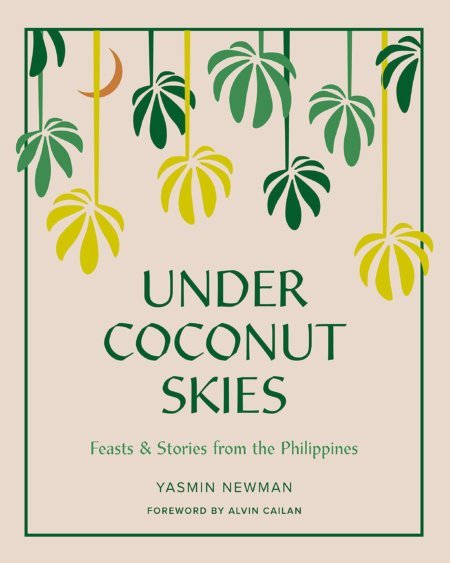


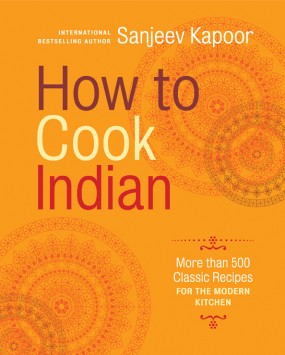
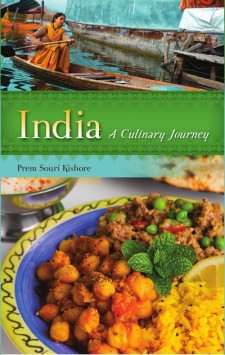
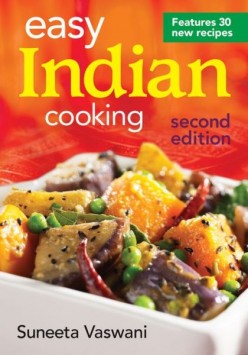
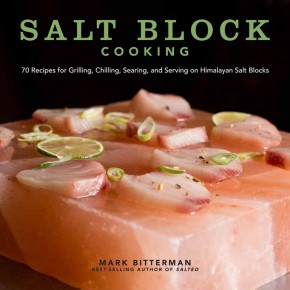
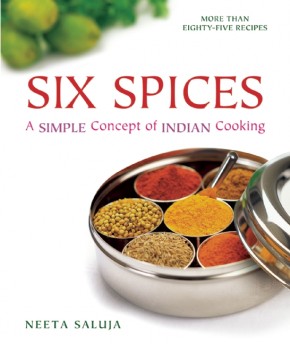
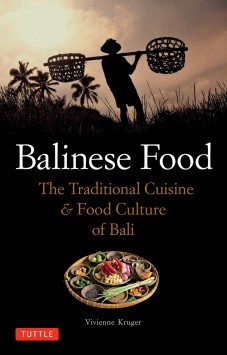
Leave a Reply